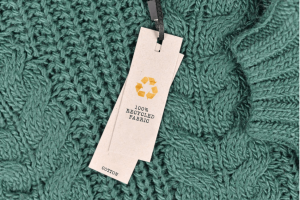Step into the glamorous realm of high-fashion clothing collections, where creativity meets sophistication and trends are born. From iconic fashion houses to cutting-edge designs, this journey will unravel the essence of haute couture and its impact on the fashion industry.
High-Fashion Clothing Collections
.jpg?w=700)
High-fashion clothing collections are characterized by their innovative designs, high-quality materials, and meticulous craftsmanship. These collections often push the boundaries of traditional fashion, showcasing avant-garde and experimental styles that set new trends in the industry.
Renowned Fashion Houses
- Chanel: Known for its timeless elegance and iconic tweed suits.
- Gucci: Renowned for its bold and eclectic designs under the creative direction of Alessandro Michele.
- Dior: Celebrated for its feminine silhouettes and luxurious fabrics.
- Balenciaga: Pushes the boundaries of fashion with its avant-garde and conceptual designs.
Influence on Mainstream Fashion Trends
High-fashion clothing collections have a significant impact on mainstream fashion trends. Designers from these prestigious fashion houses often set the tone for upcoming seasons, inspiring fast-fashion brands and influencing the choices of consumers worldwide. From runway shows to red carpet events, high-fashion collections dictate the direction of the fashion industry.
Significance of Runway Shows
Runway shows play a crucial role in showcasing high-fashion clothing collections to an audience of industry insiders, celebrities, and fashion enthusiasts. These events set the stage for designers to present their latest creations in a theatrical and impactful manner, capturing the attention of the global fashion community and generating buzz around upcoming trends.
Trends in High-Fashion Clothing
High-fashion clothing is constantly evolving, with new trends emerging each season. Designers draw inspiration from various sources, such as art, music, and culture, to create innovative and stylish pieces that capture the essence of the moment. Let’s take a closer look at some of the current trends shaping the world of high-fashion clothing.
Classic vs. Modern Interpretations
Classic high-fashion pieces, such as the little black dress or tailored suits, have stood the test of time and remain timeless wardrobe staples. However, modern interpretations of these classics often incorporate unique twists, such as unexpected fabric choices or bold embellishments, to give them a contemporary edge. Designers are constantly reinventing traditional silhouettes to keep them fresh and relevant in today’s fast-paced fashion landscape.
Role of Sustainability
Sustainability has become an increasingly important aspect of high-fashion clothing production. Many designers are embracing eco-friendly practices, such as using organic materials, reducing waste, and supporting ethical labor practices. The rise of sustainable fashion brands is reshaping the industry and influencing consumers to make more conscious choices when it comes to their wardrobe.
Impact of Technology
Technology plays a significant role in the design and creation of high-fashion clothing. From 3D printing to virtual fashion shows, advancements in technology have revolutionized the way garments are made and presented to the world. Designers are experimenting with innovative techniques and materials to push the boundaries of traditional fashion and create cutting-edge designs that captivate audiences.
Materials and Fabrics in High-Fashion Clothing

Luxurious materials play a crucial role in high-fashion clothing, elevating the overall look and feel of each piece. The craftsmanship involved in working with high-quality fabrics is meticulous and precise, ensuring that the final garment is of the utmost quality. Fabric choice is a key component in determining the aesthetic of high-fashion pieces, as different materials can convey various textures, drapes, and finishes that contribute to the overall design.
Luxurious Materials Used in High-Fashion Clothing
- Silk: Known for its lustrous sheen and smooth texture, silk is a popular choice for high-fashion garments, adding elegance and sophistication.
- Cashmere: Renowned for its softness and warmth, cashmere is often used in luxury knitwear, providing a luxurious feel to sweaters and outerwear.
- Lace: Delicate and intricate, lace adds a romantic and feminine touch to high-fashion pieces, perfect for eveningwear and special occasions.
- Leather: A durable and versatile material, leather is used in high-fashion clothing to create edgy and statement-making pieces, such as jackets and pants.
Craftsmanship in High-Quality Fabrics
Working with high-quality fabrics requires expert craftsmanship to ensure that the material is handled with care and precision. From intricate embroidery to delicate draping, the craftsmanship involved in creating high-fashion garments is a true art form that requires attention to detail and precision.
Fabric Sourcing and Ethical Considerations
Fabric sourcing is a critical aspect of high-fashion production, with designers increasingly focusing on ethical considerations. Sustainable fabrics, such as organic cotton and recycled materials, are becoming more prevalent in high-fashion collections, reflecting a shift towards environmentally conscious practices in the industry.
Clothes and Shoes
When it comes to high-fashion clothing collections, the connection with designer footwear plays a crucial role in completing a cohesive and stylish look. Iconic high-fashion shoes have become timeless classics that are often paired with designer outfits to create a fashion statement. Accessories also play a significant role in complementing high-fashion clothing ensembles, adding a finishing touch to the overall look and enhancing the outfit’s aesthetic appeal.
Connection Between High-Fashion Clothing Collections and Designer Footwear
Designer footwear is an integral part of high-fashion clothing collections, as it helps elevate the overall look and feel of an outfit. Whether it’s a pair of sleek stilettos, trendy sneakers, or classic boots, the right shoes can make a bold fashion statement and enhance the designer clothing being showcased on the runway or in editorial spreads.
Iconic High-Fashion Shoes
- Christian Louboutin’s red-soled pumps
- Manolo Blahnik’s Hangisi pumps
- Jimmy Choo’s strappy sandals
- Gucci’s Princetown loafers
Creating Cohesive Looks with High-Fashion Clothes and Shoes
Pairing high-fashion clothes with designer shoes is essential in creating cohesive looks that exude style and sophistication. Whether it’s mixing textures, colors, or styles, coordinating your outfit with the right footwear can elevate your overall look and make a fashion statement. Accessories such as handbags, belts, and jewelry can further enhance the ensemble and tie the look together.
Role of Accessories in Complementing High-Fashion Clothing Ensembles
Accessories play a vital role in complementing high-fashion clothing ensembles by adding a touch of personality and style to the outfit. From statement jewelry pieces to luxury handbags and designer belts, accessories can elevate a simple outfit and make it runway-ready. When paired thoughtfully with high-fashion clothing and shoes, accessories can complete the look and create a cohesive and polished ensemble.
Final Wrap-Up
As we close the curtains on our exploration of high-fashion clothing collections, remember that style knows no bounds when it comes to expressing individuality and artistry. Embrace the allure of luxury fashion and let your wardrobe be a canvas of self-expression.
Q&A
What distinguishes high-fashion clothing collections from regular fashion?
High-fashion collections are known for their exclusive designs, exquisite craftsmanship, and premium quality materials, setting them apart from mainstream fashion.
How do runway shows impact the perception of high-fashion clothing?
Runway shows serve as a platform for designers to showcase their creations, influencing trends and setting the tone for the upcoming fashion seasons.
Why is sustainability important in high-fashion clothing production?
Sustainability ensures ethical practices in fashion, minimizing the environmental impact of production processes and promoting responsible consumption.




